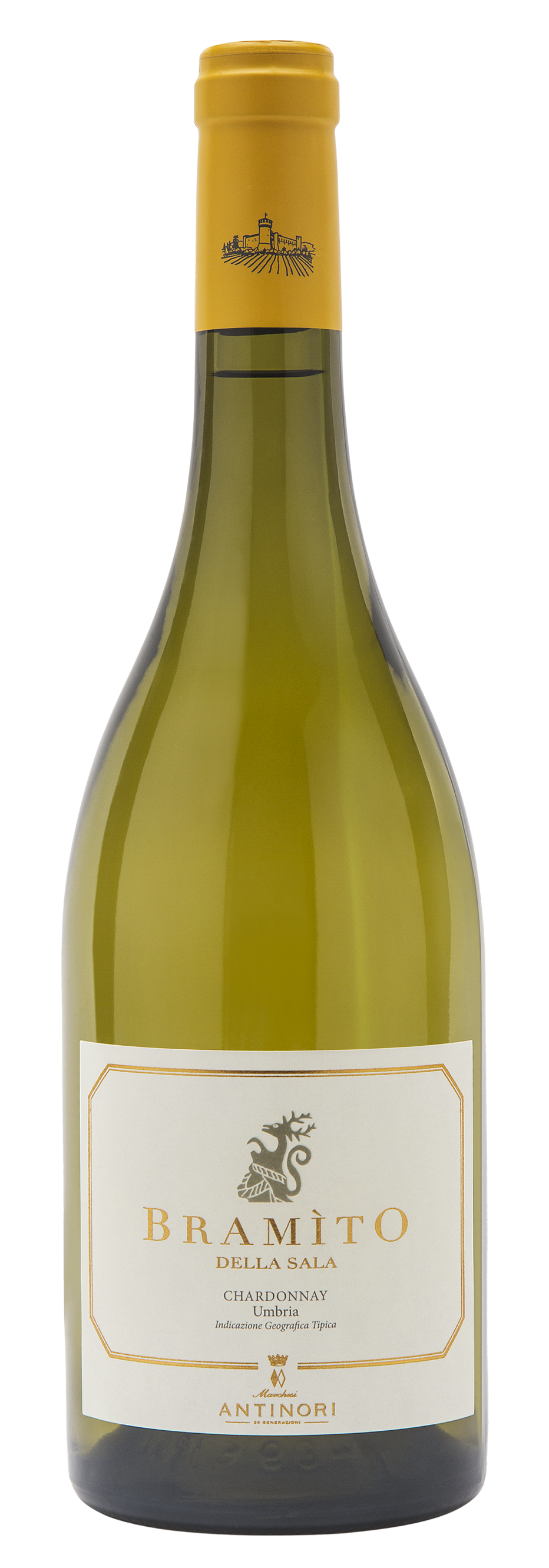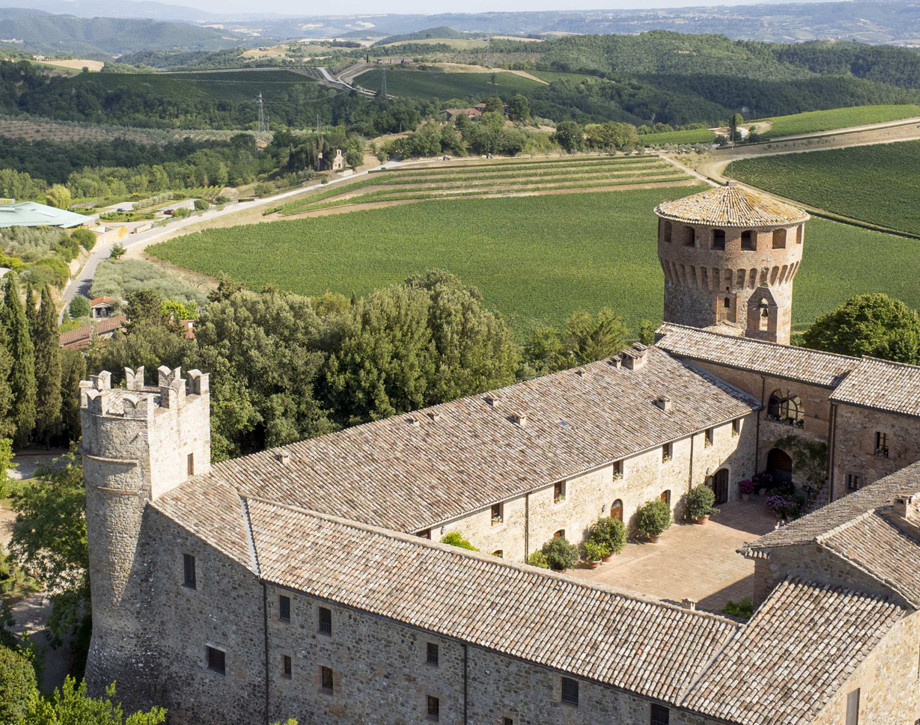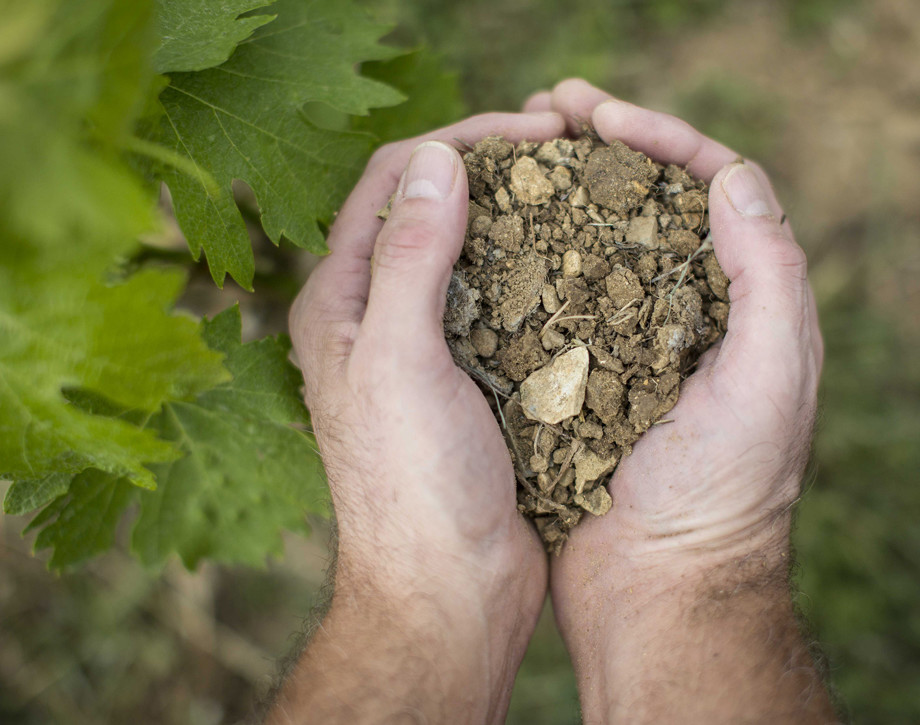Bramìto della Sala

Climate
The must and skins obtained from the destemming and pressing of the grape bunches was given a brief 2-4 maceration at a temperature of 50° Fahrenheit (10° centigrade) in order to extract from the skins all the substances found in the aromas and the flavor profile. The must went into both oak barrels and stainless steel tanks for the fermentation, which took place at temperatures held to a maximum of 61-64° Fahrenheit (16-18° centigrade); only the part fermented in oak went through a proper malolactic fermentation. The various lots of were then assembled to prepare the final wine for bottling.
Vinification
The must and skins obtained from the destemming and pressing of the grape bunches was given a brief 2-4 maceration at a temperature of 50° Fahrenheit (10° centigrade) in order to extract from the skins all the substances found in the aromas and the flavor profile. The must went into both oak barrels and stainless steel tanks for the fermentation, which took place at temperatures held to a maximum of 61-64° Fahrenheit (16-18° centigrade); only the part fermented in oak went through a proper malolactic fermentation. The various lots of were then assembled to prepare the final wine for bottling.
Historical Data
Bramito della Sala is produced from the vineyards surrounding the medieval castle at Castello della Sala. One variety that thrives in this terroir is Chardonnay. The vineyards are on soils rich in fossil deposits with veins of clay that give the wine minerality and elegance. Bramito della Sala’s first vintage was 1994.
Tasting Notes
Straw yellow in color with light greenish highlights, the wine offers delicate aromas of ripe tropical fruit along with light hints of citrus fruit. The palate shows both structure and elegance, a bracing acidity, and a pleasurably savory finish and aftertaste.

The Wine
Bramito is produced from the vineyards surrounding the medieval castle at Castello della Sala. One variety that thrives in this terroir is Chardonnay. The vineyards are on soils rich in fossil deposits with veins of clay that give the wine minerality and elegance.

Climate
The must and skins obtained from the destemming and pressing of the grape bunches was given a brief 2-4 maceration at a temperature of 50° Fahrenheit (10° centigrade) in order to extract from the skins all the substances found in the aromas and the flavor profile. The must went into both oak barrels and stainless steel tanks for the fermentation, which took place at temperatures held to a maximum of 61-64° Fahrenheit (16-18° centigrade); only the part fermented in oak went through a proper malolactic fermentation. The various lots of were then assembled to prepare the final wine for bottling.
Vinification
The must and skins obtained from the destemming and pressing of the grape bunches was given a brief 2-4 maceration at a temperature of 50° Fahrenheit (10° centigrade) in order to extract from the skins all the substances found in the aromas and the flavor profile. The must went into both oak barrels and stainless steel tanks for the fermentation, which took place at temperatures held to a maximum of 61-64° Fahrenheit (16-18° centigrade); only the part fermented in oak went through a proper malolactic fermentation. The various lots of were then assembled to prepare the final wine for bottling.
Historical Data
Bramito della Sala is produced from the vineyards surrounding the medieval castle at Castello della Sala. One variety that thrives in this terroir is Chardonnay. The vineyards are on soils rich in fossil deposits with veins of clay that give the wine minerality and elegance. Bramito della Sala’s first vintage was 1994.
Tasting Notes
Straw yellow in color with light greenish highlights, the wine offers delicate aromas of ripe tropical fruit along with light hints of citrus fruit. The palate shows both structure and elegance, a bracing acidity, and a pleasurably savory finish and aftertaste.

Castello della Sala
Castello della Sala is located in the Umbria region, not far from the Tuscan border, about 18 kilometers from the historic city of Orvieto. The Medieval castle’s property extends over an area of 600 hectares (1482 acres), 200 hectares (494 acres) are planted with vineyards at an altitude that varies between 220 and 470 meters above sea level (722/1541 feet) on the gently rolling hillsides that characterize the beautiful countryside in this area. Castello della Sala is the perfect place for growing white varieties. The vines grow in clay and calcareous based soils, rich in fossil shells, and they are well exposed to the rising of the sun with an excellent difference of temperature between day and night. The one exception to the rule is Pinot Noir, the only red variety that has found in this area ideal growing conditions to best express its full potential.

Soil
Soils originating from sedimentary deposits of marine fossils with veins of clay.
















